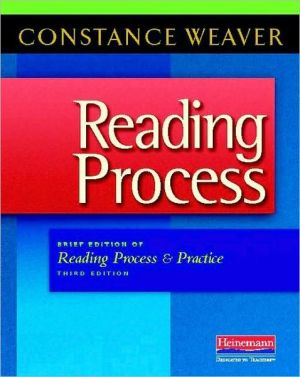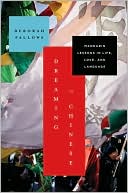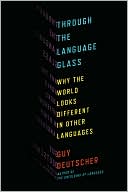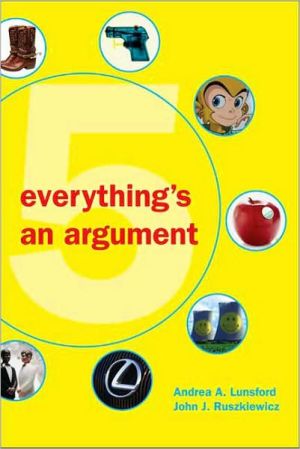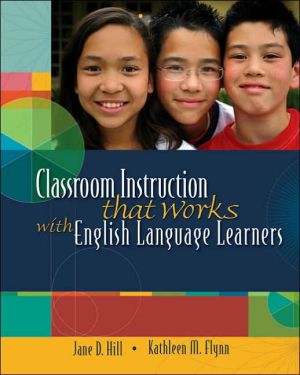Reading Process: Brief Edition of Reading Process and Practice
Still authoritative. Still definitive. Now focused on the reading process.\ The Brief Edition of Constance Weaver's classic Reading Process & Practice begins with the seemingly simple question "What is reading, anyway? What is the essence of the reading process itself?" With so many competing, often antithetical interpretations, teachers need an answer they can trust and put to use. Connie Weaver knows the research and her book is designed to help teachers develop their own research-based...
Search in google:
Still authoritative. Still definitive. Now focused on the reading process.The Brief Edition of Constance Weaver's classic Reading Process & Practice begins with the seemingly simple question "What is reading, anyway? What is the essence of the reading process itself?" With so many competing, often antithetical interpretations, teachers need an answer they can trust and put to use. Connie Weaver knows the research and her book is designed to help teachers develop their own research-based definition of reading.Written in clear, concise language, Reading Process, Brief Edition, is still comprehensive. It takes the chapters from the third edition of Reading Process & Practice that explore the reading process, miscue analysis, and supporting struggling readers, combining them with features ideal for preservice, post-graduate, and in-service learning: a new introduction that succinctly discusses of the implementation and fallout from Reading First, the National Reading Panel report, and DIBELS definitions, concepts, interactive activities, and examples that make the research accessible a model of reading that synthesizes reading research from several perspectives while emphasizing insights from sociolinguistic and psycholinguistic research a companion website (www.heinemann.com/weaver) with printable forms for miscue analysis and case studies of readers across the grades a new, detailed, interactive study guide, perfect for study by individuals, reading groups, and whole classes. To answer "What is reading?" we must examine how readers interact with texts in normal settings. To learn what this research says, we can trust Connie Weaver and Reading Process, Brief Edition. It remains the essential guide for teachers who want an understanding of reading around which they can build effective practices.
Preface xiIntroduction xiiiIntroducing the National Reading Panel Report xivThe Failure of the Reading First Initiative xviReading as a Sociopsycholinguistic Process xviiiTeaching Phonics and Phonemic Awareness xixProblems with Phonemic Awareness, Phonics, and Fluency in Reading First xxiDissecting DIBELSThe Unwanted Demand for Fluency in DIBELSReading as a Cognitive, Constructive, and "Chaotic" Process1 Definitions of Reading: They Make a Difference 1The Importance of a Definition 1Characterizing Reading and Reading Instruction 4Activity 1Activity 2Activity 3For Further Exploration 102 Schemas and Transactions in the Reading Process 14Comprehending and Learning to Read 14The Meaning of Words and Sentences: A First Look 15Schemas: What Are They? 17Schemas in Reading 19Schemas and Transactions 21Pragmatics: Situational, Social, and Cultural Factors in Reading 24Transactions Within the Language of the Text: Grammatical Signals 27Surface Versus Deep Structure 29Contrasting Models of Reading and Learning to Read 32Comprehending Language in ReadingA skills View of Reading and Learning to ReadA Transactional, Sociopsycholinguistic View of Reading and Learning to ReadFor Further Exploration 383 Contexts and Strategies in the Reading Process 41The Varieties of Context: An Overview 41Context Beyond the Sentence and the Text 44Using Context to Determine Meaning and Acquire VocabularyUsing Context to Identify WordsContext Within the Sentence 49Language Cues and Reading Strategies 52Context in Reading: Review and Preview 54For Further Exploration 574What Miscues Tell Us About Reading and Readers: Reciprocal Insights 61Reading Proficiency and the Use of Context 62Miscues on Basic Sight WordsConstructing Meaning and Reconstructing TextGood Versus Less Proficient Readers' Use of ContextWhy Not Word Identification? 71Words as SymbolsConstructing Meaning Without All the WordsConstructing Meaning and Forgetting the WordsImplications for Understanding Dialect Miscues 74Revaluing Readers 77Review and Beyond 80For Further Exploration 815 Word Perception in the Reading Process 88The Eyes and the Brain 89Parts of Words at Work 91Activity 1Activity 2Activity 3Parts of Words in ReviewHow We Perceive Words 94Activity 1Activity 2Syllables: A Perceptually Salient UnitMore on Reading by Analogy 99The Role of Phonics Rules in the Reading Process 101Word Parts and Word Perception in Review 104Eye Movement and Eye Fixation Studies and the Perception of Words 105Popular Claims by Oft-Cited ResearchersEye Fixation ResearchProficient Reading: "Flow" Rather than "Fluency" 110Toward a More Complete Model of the Reading Process 111For Further Exploration 1166 Understanding What Miscues Can Tell Us About Readers' Strategies 120What We Can Learn by Analyzing Miscues 121Miscue Markings 122SubstitutionInsertionOmissionPartialReversalCorrectionUnsuccessful Attempt at CorrectionAbandoning a Correct ResponseRepetitionPauseSounding OutMumbleMiscues That Reflect Good Strategies 125Miscues That Reflect Good PredictionMiscues Involving Pronouns and Function WordsMiscues That Reflect Readers' Language PatternsImmature Speech PatternEthnic, Social, or Regional DialectESL-Related and EFL-Related MiscuesMiscues That Result from Monitoring ComprehensionRestructuringsRegressions to CorrectRepetitions and PausesMiscues That Suggest Inefficient Reading 133Overcorrection of MiscuesMiscues That Suggest Ineffective Reading 135The Use of Graphic Cues in Relation to Other Cues 136Effective Use of Graphic Cues Along with Other CuesUnderuse of Graphic CuesOveruse of Graphic Cues and Underuse of Other CuesRelated but Different Approaches to Miscue Analysis 138Miscue Analysis in the Goodman TraditionCrucial Differences Between Miscue Analysis and Running RecordsFor Further Exploration 1447 Analyzing Miscues and Looking for Patterns 155156161Coding the MiscuesAnalyzing, Coding, and Interpreting the Data from Tony's Miscues 163Analyzing and Coding Tony's MiscuesInterpretation of Tony's Miscue PatternsAnother Way of Coding Tony's MiscuesMarking Miscues for Coding 168How to Mark Miscues on the Selection CopyGeneral Principles and Procedures for Coding Miscues 170Question 1 Did the miscue reflect the speaker's ordinary speech patterns?Question 2 Did the miscue go with the grammar and meaning of what came before?Question 3 Did the miscue go with the grammar and meaning of what followed?Question 4 Did the miscue leave the essential meaning of the sentence intact?Question 5 Was the miscue corrected?Question 6 Was the miscue graphically similar?Question 7 Was the sentence, as the reader finally left it, semantically acceptable ivithin the whole original selection that was read?Alternative Miscue Analysis Procedures and Forms 175Analyzing Jay's Miscues 179Interpretation of Jay's Miscue PatternsFor Further Exploration 1838 Developing a Reader Profile: From Assessment to Instruction 184The Reading Interview and the First Session 185The Reading InterviewPreparing for and Conducting the First SessionRecording the Data from the InterviewPreparing for and Conducting the Second Session 191Preparing for the ReadingPreparing for the Retelling and Extended DiscussionPreparing to Ask Questions About a StoryConducting the Oral Reading and RetellingDiscussionRecording the Retelling DataRecording the Miscues on the Selection CopyCoding the Miscues and Analyzing PatternsDeveloping a Reader Profile: Tangling with the Messiness of Reality 200The Reading IntervieiuThe Retelling and DiscussionMiscues, Miscue Patterns, and Reading StrategiesAn Instructional PlanAdditional Forms for Recording Data 208Other Aspects of a Reading Portfolio and Profile 211For Further Exploration 2119 Revaluing Readers, Retrospective Miscue Analysis, and Other Strategies for Helping Readers 212Phonics, Words, and Reading 213Efficient Reading and Fluency 214Revaluing Readers 215Erica: From Analysis to Assistance 216Analyzing Erica's MiscuesHelping Erica Revalue Herself as a ReaderRetrospective Miscue Analysis 221Teachers Choosing the Miscues for DiscussionReaders Selecting Their Own Miscues for DiscussionRetrospective Miscue Analysis with Pairs or GroupsThe "Think-Aloud" Strategy 226Helping Readers Develop Needed Concepts, Vocabulary, and Strategies 227Extra Help Through Shared Reading and Constructive Reading Strategies 228For Further Exploration 230Appendix to Chapter 9: Matching Instniction to Readers' Varied Needs 231Notes 239References 243Index 271
